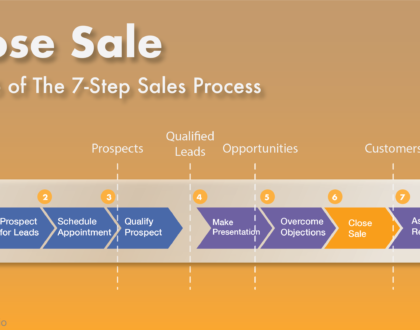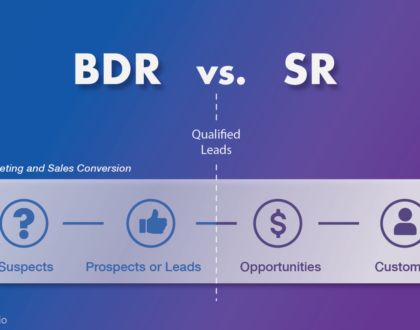Target Account Selling: Strategies for Maximizing Success with Key Accounts

![]()
Introduction
Target Account Selling (TAS) strategies involve identifying and engaging high-value accounts matching the Ideal Customer Profile (ICP).
In TAS, sales efforts are directed towards nurturing relationships with a select group of target accounts rather than casting a wide net.
This approach allows sales teams to allocate resources more efficiently and maximize the impact of their target account selling strategies.
Within the framework of TAS, the concept of Buyer Personas plays a crucial role. Buyer Personas are fictional representations of ideal customers based on market research and real data.
By understanding the needs, preferences, and pain points of Buyer Personas, sales teams can tailor their messaging and outreach efforts to resonate with their target audience.
The AIDA model (Attention, Interest, Desire, Action) serves as a guiding framework for engaging with target accounts throughout the sales process.
TAS strategies are designed to systematically move target accounts through each stage of the AIDA model, from capturing their attention to compelling them to take action.
Patience and persistence are fundamental principles of TAS. Building relationships with high-value accounts takes time and effort, and success may not be immediate.
Sales teams must remain committed to nurturing relationships with target accounts over the long term, even in the face of challenges or setbacks.
Furthermore, ensuring that target accounts fit the Ideal Customer Profile (ICP) is essential for the success of TAS initiatives.
By focusing on accounts that align closely with the ICP, sales teams can maximize their chances of converting leads into customers and driving sustainable growth and success.
In the following sections, we will delve deeper into the key principles and strategies of Target Account Selling, exploring how organizations can leverage TAS to achieve their sales objectives and drive business growth.
Understanding Target Accounts for Successful TAS Strategies
Target accounts are specific companies or organizations that align closely with the ICP of a business.
These accounts typically exhibit characteristics such as high revenue potential, a need for the products or services offered by the business, and a strong fit with the company’s value proposition.
In order to identify target accounts effectively, sales teams must first define their ICP.
This involves analyzing past successful customers, identifying common traits and characteristics, and creating a profile of the ideal customer based on factors such as industry, company size, geographic location, and buying behavior.
Once the ICP has been established, sales teams can begin the process of identifying, prioritizing, and segmenting target accounts.
This may involve conducting market research, leveraging data analytics tools, and collaborating with marketing and leadership teams to identify accounts that meet the criteria outlined in the ICP.
Strategies for identifying target accounts may include leveraging existing customer data, conducting industry research, monitoring social media and online forums for relevant discussions, and attending industry events and conferences to network with potential prospects.
Prioritizing target accounts involves evaluating each account based on factors such as revenue potential, level of engagement, and fit with the ICP.
High-priority accounts are those that offer the greatest potential for revenue growth and align most closely with the company’s value proposition.
Segmenting target accounts allows sales teams to tailor their approach and messaging to different groups of prospects based on factors such as industry vertical, company size, and geographic location.
This ensures that outreach efforts are personalized and relevant to the specific needs and preferences of each target account.
In cultivating relationships with target accounts, patience and long-term thinking are essential. Building trust and credibility with high-value prospects takes time, and success may not be immediate.
Sales teams must be willing to invest the necessary time and effort into nurturing relationships with target accounts over the long term, even in the face of challenges or setbacks.
By adopting a patient and strategic approach, sales teams can maximize their chances of success and drive sustainable growth and success for their business using effective target account selling strategies.
Research and Preparation: Key Steps in TAS
Effective engagement with target accounts begins with thorough research and preparation. Buyer Personas and the Ideal Customer Profile (ICP) play a crucial role in informing these efforts.
Buyer Personas provide valuable insights into the goals, challenges, and preferences of key decision-makers within target accounts.
By understanding the needs and pain points of these personas, sales teams can tailor their messaging and outreach efforts to resonate with the specific interests and priorities of each individual.
Similarly, the ICP serves as a guiding framework for identifying the most promising target accounts and prioritizing outreach efforts.
By aligning with the criteria outlined in the ICP, sales teams can ensure that their efforts are focused on accounts that offer the greatest potential for success.
Thorough research is essential for gathering relevant information about target accounts, including their industry, size, organizational structure, and key decision-makers.
This information can be obtained through a variety of channels, including online research, social media monitoring, and networking events.
Personalized outreach is key to engaging effectively with target accounts.
Sales teams must tailor their messaging and communication style to resonate with the specific needs and preferences of Buyer Personas within each account.
This may involve customizing email templates, crafting personalized LinkedIn messages, or conducting targeted outreach campaigns based on the interests and pain points of key stakeholders.
Building rapport and nurturing relationships with key stakeholders within target accounts requires patience and consistency.
Sales teams must be willing to invest the necessary time and effort into establishing trust and credibility over the long term.
By demonstrating genuine interest in the success of the account and consistently delivering value, sales professionals can build strong relationships that lead to lasting partnerships and opportunities for growth.
Building Relationships and Rapport through Social Selling for TAS Success
Social selling has emerged as a powerful tool for building relationships and rapport with target accounts in the modern sales landscape.
By leveraging social media platforms effectively, sales professionals can enhance their rapport-building efforts and foster authentic engagement with key stakeholders.
One strategy for leveraging social selling is to use platforms like LinkedIn to establish credibility, trust, and thought leadership within target accounts.
Sales professionals can share valuable insights, industry news, and relevant content to position themselves as trusted advisors and experts in their field.
Engaging with target accounts on social media requires a patient and strategic approach.
Rather than focusing solely on promotional content, sales professionals should prioritize value-driven interactions that resonate with the interests and needs of key stakeholders.
This may involve commenting on posts, sharing relevant articles, or participating in industry-related discussions to demonstrate expertise and insight, all while implementing effective target account selling strategies.
Consistency is key when it comes to social selling. Sales professionals must maintain a regular presence on social media platforms and engage consistently with target accounts over time.
By building a reputation for reliability and authenticity, sales professionals can strengthen relationships and nurture trust with key stakeholders, ultimately paving the way for future opportunities and collaborations.
Sensing Buying Signals and Timing Engagement in Target Account Selling
In Target Account Selling (TAS), timing is crucial. Sales professionals must be adept at sensing buying signals and engaging with target accounts at the right moment to maximize conversion opportunities.
Monitoring buying signals and engagement metrics is essential for gauging the readiness of target accounts and determining when to initiate outreach efforts.
Strategies for sensing buying signals include closely monitoring indicators such as website visits, content downloads, email opens, and social media interactions.
By tracking these metrics, sales professionals can identify when target accounts are actively exploring solutions and exhibiting interest in their offerings, aligning with effective target account selling strategies.
Once sufficient engagement is detected, sales professionals can strategically place calls and initiate outreach efforts to capitalize on buying signals.
This may involve reaching out to key stakeholders with personalized messages or scheduling meetings to further discuss their needs and requirements.
However, it’s crucial to exercise patience and refrain from making premature or overly aggressive sales pitches.
Instead, sales professionals should focus on building rapport, providing value, and addressing the specific pain points and challenges of target accounts.
By leveraging buying signals and engaging at the right time, sales professionals can increase their chances of success and effectively move target accounts through the sales pipeline toward conversion.
Creating Value Propositions Aligned with Buyer Personas for TAS
In Target Account Selling (TAS), crafting compelling value propositions is essential for engaging target accounts effectively.
To resonate with the specific needs and preferences of Buyer Personas within target accounts, sales professionals must develop value propositions that address their pain points, challenges, and aspirations.
Value propositions should be tailored to each Buyer Persona’s unique characteristics, priorities, and objectives.
This requires thorough research and understanding of the Buyer Personas’ goals, preferences, and decision-making criteria.
Furthermore, value propositions should align with each stage of the AIDA model (Awareness, Interest, Desire, Action) to guide target accounts through the buyer’s journey.
By addressing different stages of the AIDA model, sales professionals can capture attention, generate interest, create desire, and compel action effectively, reflecting strategic target account selling strategies.
However, developing value propositions that resonate with Buyer Personas and align with the AIDA model requires patience and perseverance.
Sales professionals must continuously refine their messaging based on feedback, market insights, and evolving customer needs.
By creating value propositions that are aligned with Buyer Personas and the AIDA model, sales professionals can enhance engagement, drive conversions, and ultimately achieve success in Target Account Selling.
Executing Sales Process in Target Account Selling: Success Strategies
In Target Account Selling (TAS), systematically guiding target accounts through the AIDA model of the Buyer’s Journey is crucial for success.
By aligning sales efforts with the stages of Awareness, Interest, Desire, and Action, sales professionals can effectively nurture relationships and drive conversions.
However, executing the sales process requires patience and consistency.
Sales professionals must understand that building meaningful relationships and driving conversions takes time and perseverance.
It is essential to maintain ongoing engagement with target accounts, delivering value at each stage of the buyer’s journey.
Furthermore, collaboration between marketing, business development, and sales teams is paramount in executing the sales process effectively.
By working together, teams can ensure that messaging and tactics are aligned, maximizing the impact of outreach efforts and enhancing the overall customer experience.
While TAS may take time to generate results, the outcomes can be extraordinary when companies exhibit patience and persistence in executing their strategies.
By staying committed to the process and maintaining focus on delivering value to target accounts, organizations can achieve remarkable success in their sales endeavors.
Measuring and Optimizing for Target Account Selling Success
In Target Account Selling (TAS), measuring effectiveness and optimizing performance are essential for long-term success.
Key performance indicators (KPIs) play a crucial role in tracking progress and identifying areas for improvement.
Identifying the right KPIs is critical for evaluating the success of TAS initiatives.
Metrics such as conversion rates, deal velocity, and customer lifetime value can provide valuable insights into the effectiveness of sales efforts and the overall health of the sales pipeline.
Once KPIs are established, it’s essential to continuously monitor and analyze performance data.
By regularly reviewing sales metrics, customer feedback, and insights derived from interactions with Buyer Personas, organizations can identify trends, challenges, and opportunities for optimization.
Optimizing TAS strategies requires a continuous improvement mindset. Sales teams must be willing to experiment with new approaches, iterate on existing processes, and adapt to changing market dynamics.
By embracing innovation and agility, organizations can refine their TAS initiatives and drive sustainable growth and success over time.
Patience is key when it comes to optimization. While immediate results may not always be apparent, incremental improvements compounded over time can lead to significant enhancements in sales performance.
By remaining patient and committed to the optimization process, organizations can maximize the impact of their TAS efforts and achieve lasting success.
Conclusion
In conclusion, Target Account Selling (TAS) offers a strategic approach to sales that requires patience, persistence, and alignment with the Ideal Customer Profile (ICP) for optimal results.
Throughout this blog post, we have explored the importance of understanding target accounts, building relationships, and executing the sales process with precision and consistency.
The journey of TAS may require time, effort, and unwavering commitment, but the rewards can be extraordinary.
By embracing the principles of patience and persistence, organizations can unlock new opportunities, drive sustainable growth, and achieve long-term success in today’s competitive market landscape.
We encourage readers to take the insights shared in this blog post and apply them to their own TAS initiatives.
Whether you are just beginning your journey or seeking to optimize existing strategies, remember that success in TAS requires a steadfast focus on the ICP, coupled with a willingness to adapt and innovate over time.



